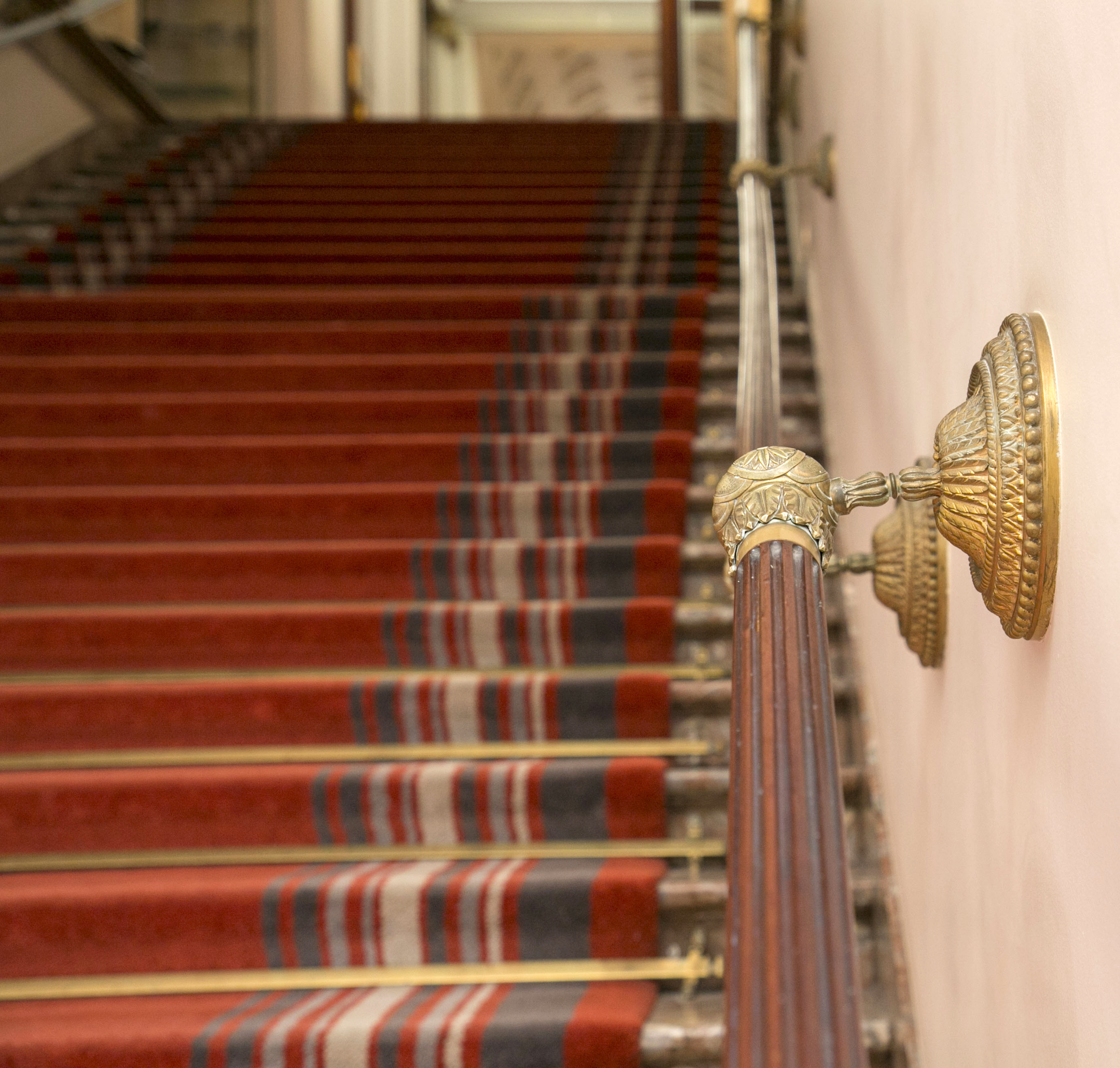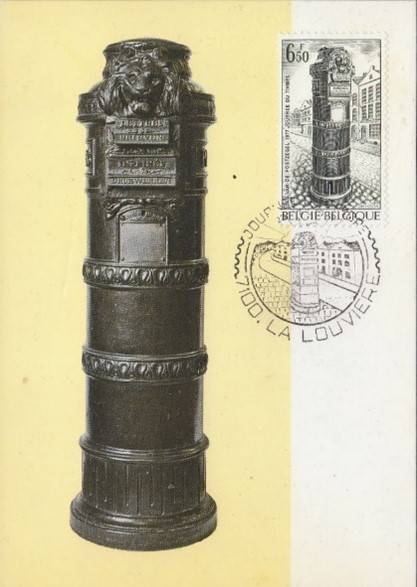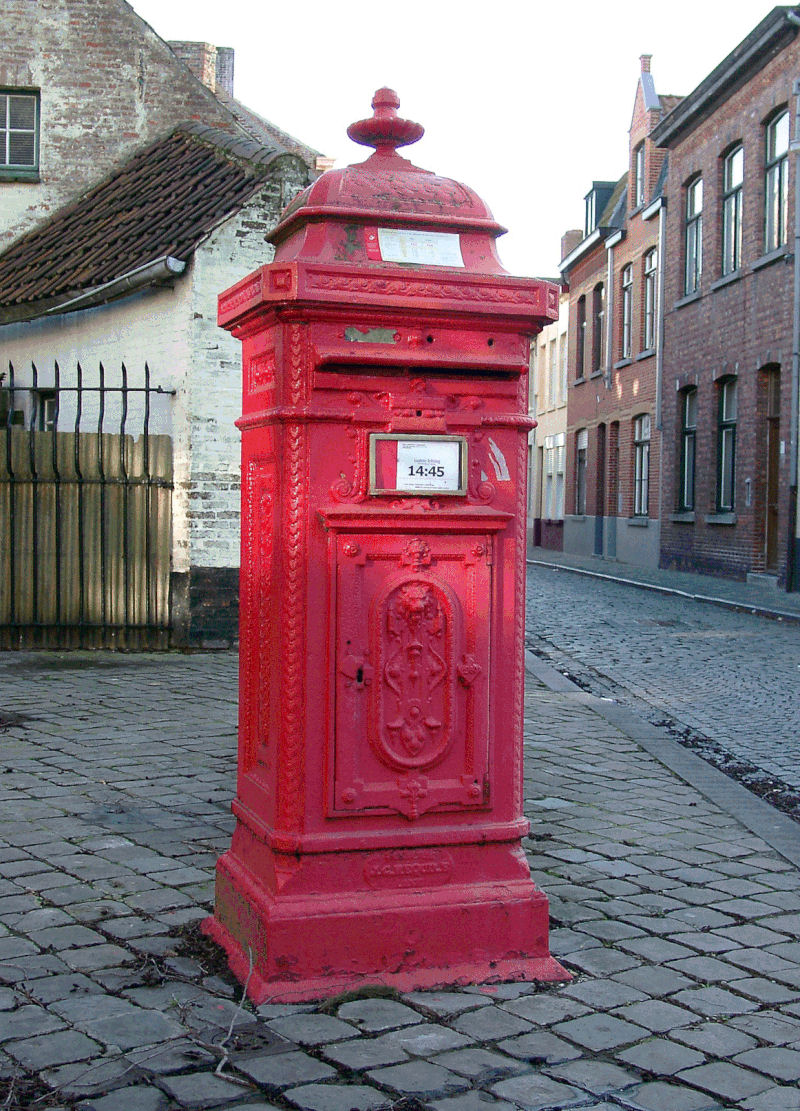
The Senate and the Chamber of Representatives pillar postboxes - made by a parliamentarian!
The Senate and the Chamber each have a white veined marble ‘pillar box’. The Senate’s pillar box is located close to the plenary room on the landing, while the Chamber’s can be found near the Rue de Louvain exit.
These ancient pillar boxes most likely date back to 1870–75. They may well have been the first postboxes of Belgium’s federal parliament (Palais de la Nation). Before that, like everywhere in Belgium before 1850, people had to go to the post office to post their letters (most likely a porter’s job!).
In 1849, however, the system of pre-paid postage was introduced. This meant people no longer had to go to the post office to put stamps on their post. From that moment on, the public naturally wanted postboxes near their homes for posting their stamped letters.
From 1850–52 onwards, cast-iron postboxes were put into service in towns and cities. By 1860, the postal services had installed over 3,000 of these boxes across Belgium, giving preference to public places such as municipal buildings and churches. The postboxes were cylindrical at first, and after 1860 had a lion and the words ‘lettres-brieven’ (letters) and ‘imprimés-drukwerk’ (printed matter) inscribed on them. In 1897, the year that postal legislation entrusting the government with ‘collections from post boxes, and the transport and distribution of correspondence’ was enacted, a square model emerged, painted in red (the colour of the post vehicles).[ 1 ]
The pillar boxes at the Senate and the Chamber of Representatives were designed as decorative features of the Palais de la Nation. A pendulum clock with the base fixed on the marble sits on the first, while the second is topped by a statue of Minerva, Roman goddess of trades, who was gradually equated with Athena, Greek goddess of high thought, wisdom, strategy and intelligence.
The middle sections of both terminals are decorated in the same way: a hanging garland or festoon of flowers attached to buttons (very similar to the decorations on the royal park’s entrance pavilions), fluting with buttons and horizontal fasces lictoria.
In the lower section of the Senate’s pillar, a marble plaque bears an engraving of the symbolic post horn. This the only attribute that signals its postal function, aside from its opening for inserting letters. An opening on the side allows the post to be emptied from the boxes, ready for onward delivery.
The Belgian crown and lion, which one might have expected from a parliament that has these in abundance, are absent. The distinction between letters and printed matter is, of course, unnecessary, since at the time parliament’s post was always sent by priority delivery. But since each assembly had its own postcode (1008 and 1009), two post boxes were necessary (since there was at least one assembly per Belgian municipality).
We know who sculpted these pillar boxes: a well-known parliamentarian named Louis Bertrand. Founder of Le Peuple daily newspaper in 1885 and, the same year, of the Belgian Workers’ Party alongside Edward Anseele, he became an MP in 1894. He served in the Chamber until 1926.
In the press, his obituaries made ample mention of the fact he would deposit his parliamentary post in a postbox he had sculpted with his own hands![ 2 ] His national biography recalls that he had the opportunity to go to school until he was 12. After that, he had to help support his family by selling newspapers and then cutting stones. He was gifted and was soon hired by a marble maker on Chaussée de Haecht (probably at V.J. André). It was there that, between 1870 and 1878,[ 3 ] he made the pillar boxes at the federal parliament. Little did he know that one day he would be using them himself!
- Thanks are due to Michel Mary, former head of the postal museum for his article on 'a short history of postboxes' and his analysis. The Belgian postal service's (Bpost) public relations department had already informed us that the postboxes at the federal parliament were not 'standard'. This is also why Bpost had refused to collect post from them. See also the 'Journée du timbre 1977' (1977 stamp day) notice and the issuance of stamps bearing the image of the cylindrical postbox. [ back ]
- For example, La Province de Namur, 22 June 1943. [ back ]
- We know that the Senate purchased the clock that sits on top of his box in 1879. [ back ]
© Belgian Senate




